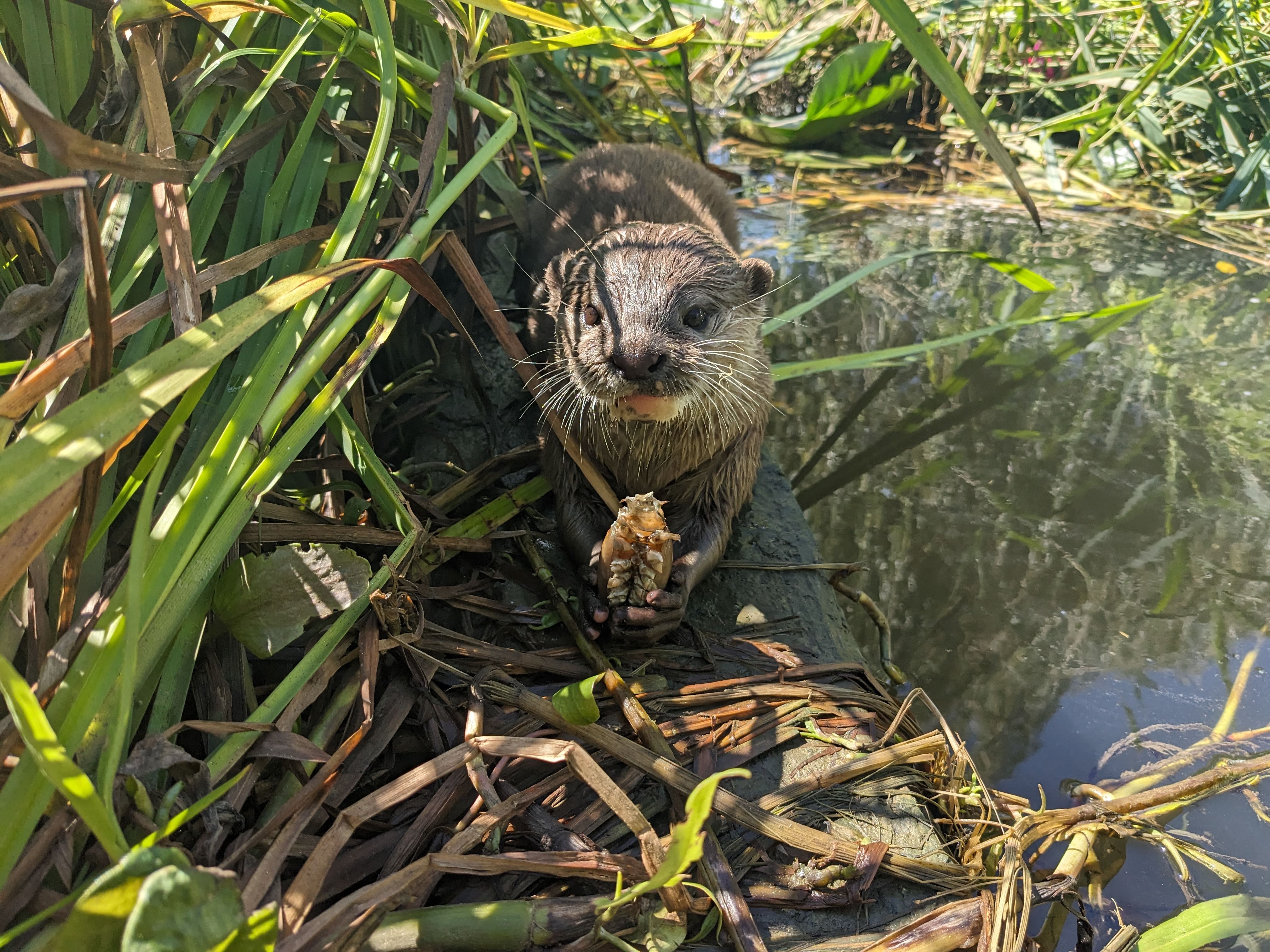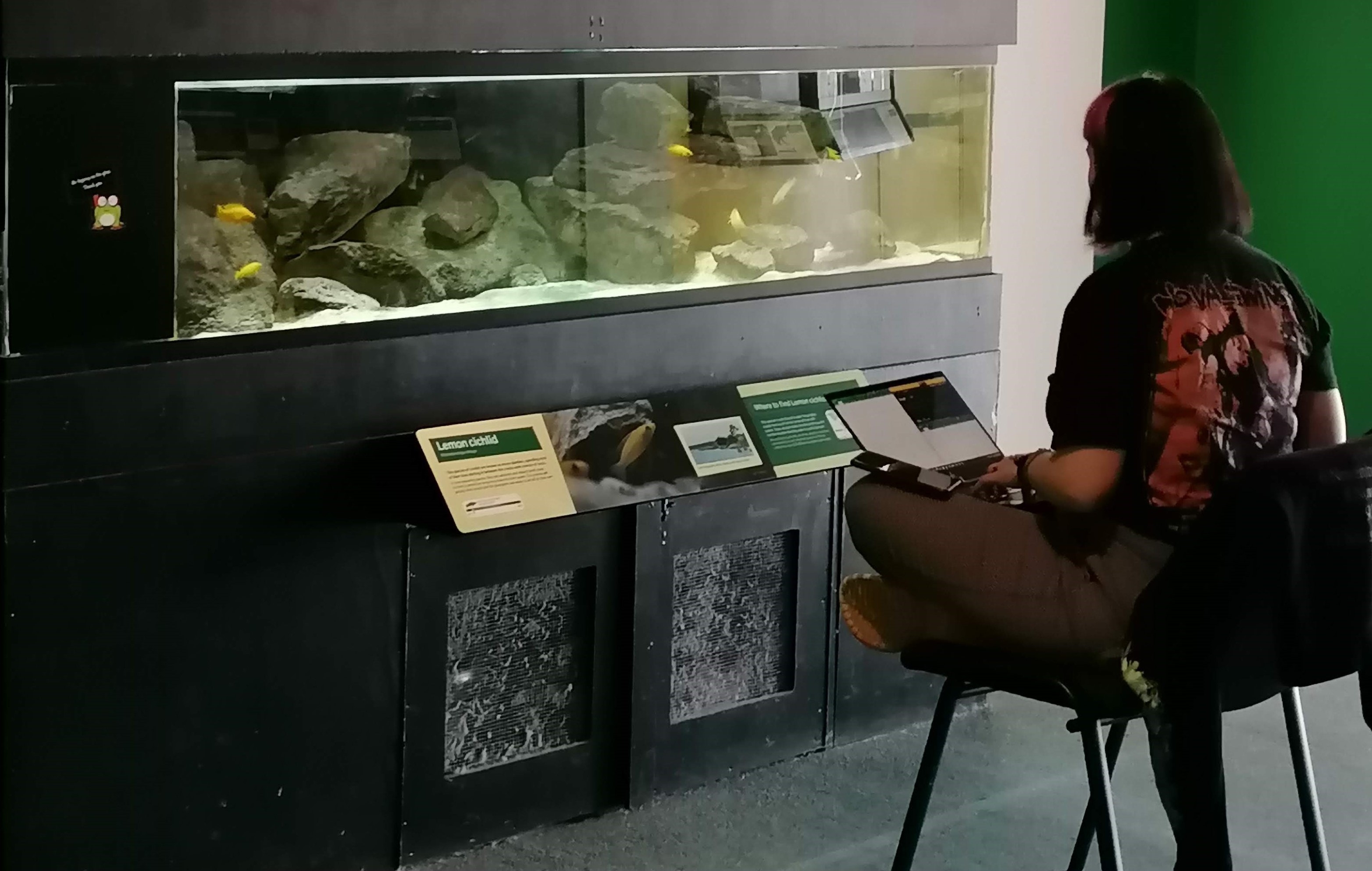Evidence-based animal welfare needn’t be overwhelming writes Katie McDonald, Deana Stephens, and Paul Rose, members of BIAZA’s Animal Welfare Working Group (AWWG).
Ensuring that animals under human care experience good welfare is a key purpose of 21st Century zoos and aquariums (hereafter “zoos”) and is a main objective of evidence-based husbandry and management. As a sector, we continue to make strides to improve animal welfare. Such continual improvements include zoo accreditation schemes that, as a collective, help codify these approaches and advances in animal welfare, lifting participating zoological organisations to reach better welfare. standards
Welfare, as a concept, is hard to define, but it can be thought of as how well an individual animal is coping with their current situation, based on physical, behavioural, and psychological indicators. Central to attaining good animal welfare is guaranteeing that all species in the zoo’s collection are cared for according to their needs and ecology. This care is focussed on inputs (housing, enclosure design and complexity, physical and social environment, environmental enrichment, and daily husbandry routines) that enable an animal to experience positive outputs, which are psychological states (feelings, emotions) and that indicate an animal is contented, or comfortable, or engaged by their surroundings.
Inferring the emotional states in mammals can be (slightly) clearer, for example through description of body language, determining the emotional welfare outputs in all non-mammalian taxa is less defined. Working on evidence-based approaches to ensure that inputs are biologically relevant is the optimal foundation for any eventual achievement of positive welfare outputs.
Including several different scientific methodologies into welfare assessment strategies provides clarity on what animals want and need, and how to provide for these. For example, we can use social network analysis to understand how individuals interact within their group, to identify, and ultimately maintain social connections of importance. Or we can implement Qualitative Behavioural Assessment, QBA, (a means of defining and describing animal body language under different environmental and social conditions) to understand how animals experience positive moods and feelings when using environmental enrichment, for example. Disseminating information on such scientific methods, and their application to animal welfare assessment, is a key objective of BIAZA’s AWWG.
Sector thinking on how we provide resources to facilitate good welfare, and how we evaluate the success of actions, is evolving. Enrichment is an example of this. Enrichment is no longer considered an extra addition to “basic husbandry” with the prevention of problematic behaviours as its major goal. An enrichment rota should not be designed in isolation but constructed so that it complements any stimulation provided by feeding schedules, training regimes, social grouping, and other aspects of species-specific husbandry.

Enclosures and husbandry are themselves enriching, providing positive welfare outcomes, when based on ecological evidence.
Similarly, we now understand that simply recording whether an animal engages with enrichment is not sufficient to declare success. Sometimes a single enrichment is provided with a specific goal in mind, but such enrichment provision may be one component in a suite of measures with the overall intention of welfare enhancement. Consequently, the benefits achieved cannot be attributed to one isolated component. The overall goal is always excellent welfare and this manifests through the expression of positive emotional states and a species- and situation-appropriate behavioural repertoire and activity budget. Our greater level of understanding means that more time is required for evaluation.
Whilst discussions of evidence-based practice and welfare assessments can seem overwhelming, you will hopefully find that this is something many zoos are already performing (maybe in a more informal manner). All that is required is a bit of polishing to ensure such informal approaches are relevant to regular and repeatable welfare scoring that actually benefits the animal. Putting in the effort to thoroughly assess the impact of environmental change and enrichment provision is cost and time saving in the longer term, as staff will know what is worth doing and can ultimately allocate resources most efficiently. Optimising the resources provided by the AWWG, available to BIAZA members on the BIAZA website, and reaching out for support is a great place to start.
Formally and regularly assessing welfare enables adaptation of husbandry to meet an animal’s needs, and is essential to ensure that species are thriving, and if they are not, what we can do to improve their conditions. Using a structured animal welfare framework, such as relevant application of the Five Domains approach, can highlight potential areas of concern more rapidly by more closely monitoring behaviour, than more informal methods of day-to-day recording. This results in better outcomes for the animal (e.g., improved health, behaviour patterns, conservation success) and for the zoo (e.g., reduced costs accrued, enhanced public perception of how the zoo cares for its animals). It is essential that any welfare assessment framework chosen is suitable and relevant to that species, otherwise results from an assessment will not be accurate or valid. Promoting welfare assessment tools can be an educational tool for the public, if communicated accessibly, highlighting the true extent that welfare-focused zoos strive to ensure their animals are cared for correctly.

Welfare assessments need to be completed regularly and in a relevant manner for the species under scrutiny.
Collectively, how the industry meets animal welfare needs has come a long way and is still progressing. As more research is conducted and evidence-based practice becomes the norm, so animal welfare is boosted. Performing QBAs, monitoring the effectiveness of enrichment, constructing social groups in an ecological relevant manner, identifying behaviours that impact on health, and adapting management accordingly support better outcomes for our animals right now and secure their overall future as a species in the zoo.
By BIAZA’s Animal Welfare Working Group
-
News
.png?w=100&h=100&zc=1&f=jpeg&hash=0430edf351b539b75228d809dfbb874a) CCTV footage at Noah’s Ark Zoo Farm shows elephants' cosy slumber 29th April, 2024Have you ever pondered how elephants sleep? Noah’s Ark Zoo Farm, a zoo and conservation charity in North Somerset, unveils night-time footage capturing…
CCTV footage at Noah’s Ark Zoo Farm shows elephants' cosy slumber 29th April, 2024Have you ever pondered how elephants sleep? Noah’s Ark Zoo Farm, a zoo and conservation charity in North Somerset, unveils night-time footage capturing… -
NewsYorkshire wildlife park celebrates the birth of a cute Gelada Monkey 26th April, 2024Award-winning Yorkshire wildlife park is celebrating the birth of a cute Gelada Monkey. The baby boy was born on the 23 March to mum Feven and dad…
-
News‘Extinct’ dove takes flight at Paignton Zoo 25th April, 2024The Socorro dove is extinct in the wild. However, Paignton Zoo in Devon is not only home to these rare birds, but keepers are proud to announce that a…



